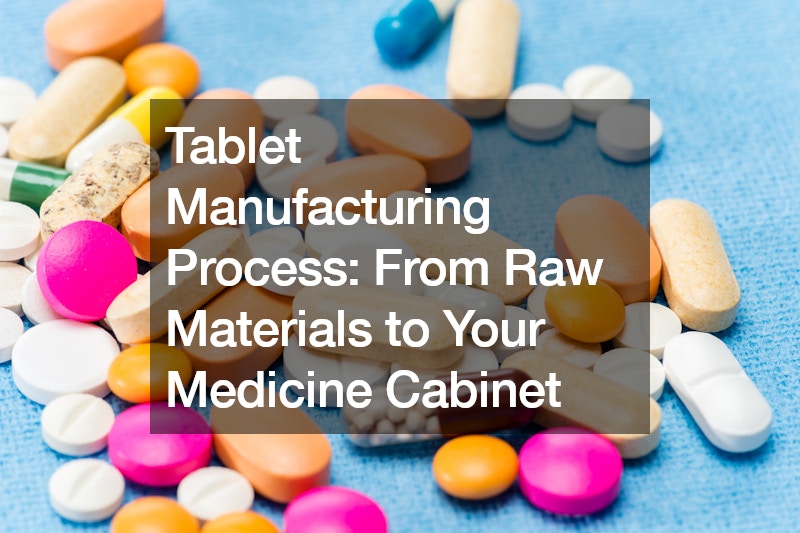

The tablet manufacturing process is a detailed and methodical journey that turns raw materials into effective, safe medications. Here’s a breakdown of this intricate process:
1. Blending Ingredients
The process begins with blending, where active pharmaceutical ingredients (APIs) are mixed with excipients to ensure a homogeneous mixture. Blenders like V-cone and octagonal blenders are commonly used to achieve uniform distribution of the active ingredients, which is crucial for the effectiveness of the final product.
2. Granulation
Next comes granulation, where the powdered ingredients are converted into granules. This step improves the flow properties of the powder and facilitates the compression process.
Granulation can be performed either wet or dry, depending on the characteristics of the raw materials and the requirements for the final tablet.
3. Drying
Once granulation is complete, the granules are subjected to drying to remove excess moisture. Methods such as tray drying and fluid bed drying are used to achieve the desired moisture content. This step ensures that the granules are ready for the next stage and helps maintain the stability of the active ingredients.
4. Compression
In the compression phase, the dried granules are compressed into tablet form using high-pressure tablet presses. This step shapes the tablets and determines their physical properties, such as hardness, size, and thickness, which affect the tablet’s dissolution and the release of active ingredients.
5. Coating and Polishing
After compression, tablets undergo coating to enhance appearance, improve stability, and mask unpleasant tastes. Common methods include spraying or dipping the tablets in a coating solution. Following coating, tablets are polished to remove any sharp edges and achieve a smooth, shiny finish.
6. Quality Control and Packaging
Finally, quality control tests ensure that each tablet meets stringent standards for efficacy and safety. The tablets are then packaged into blisters, strips, or bottles, ready to be shipped to pharmacies and healthcare providers. Effective pharmacy cold chain management is crucial during this stage to ensure that the tablets remain in optimal condition throughout distribution.
From the initial blending of ingredients to the final packaging, every step in the tablet manufacturing process is designed to ensure that medications are both effective and safe for consumers.
.








